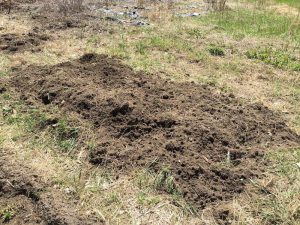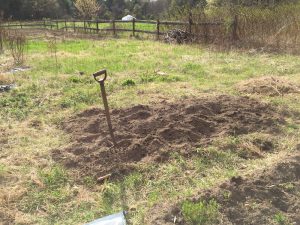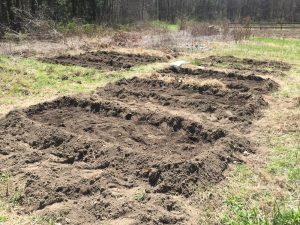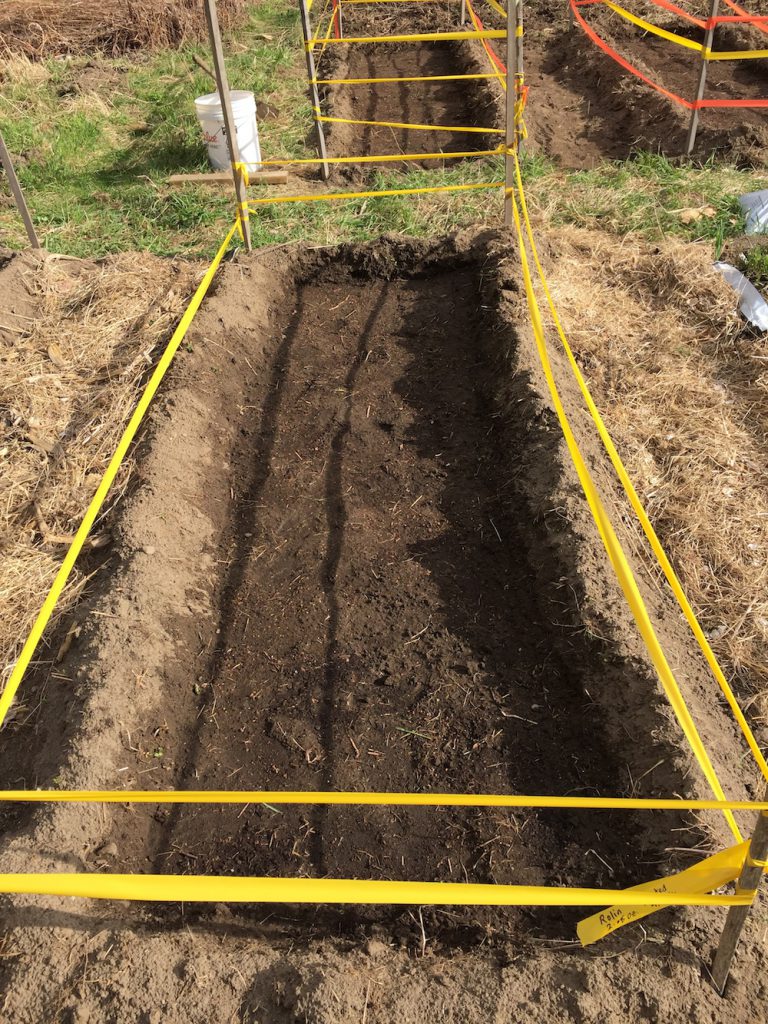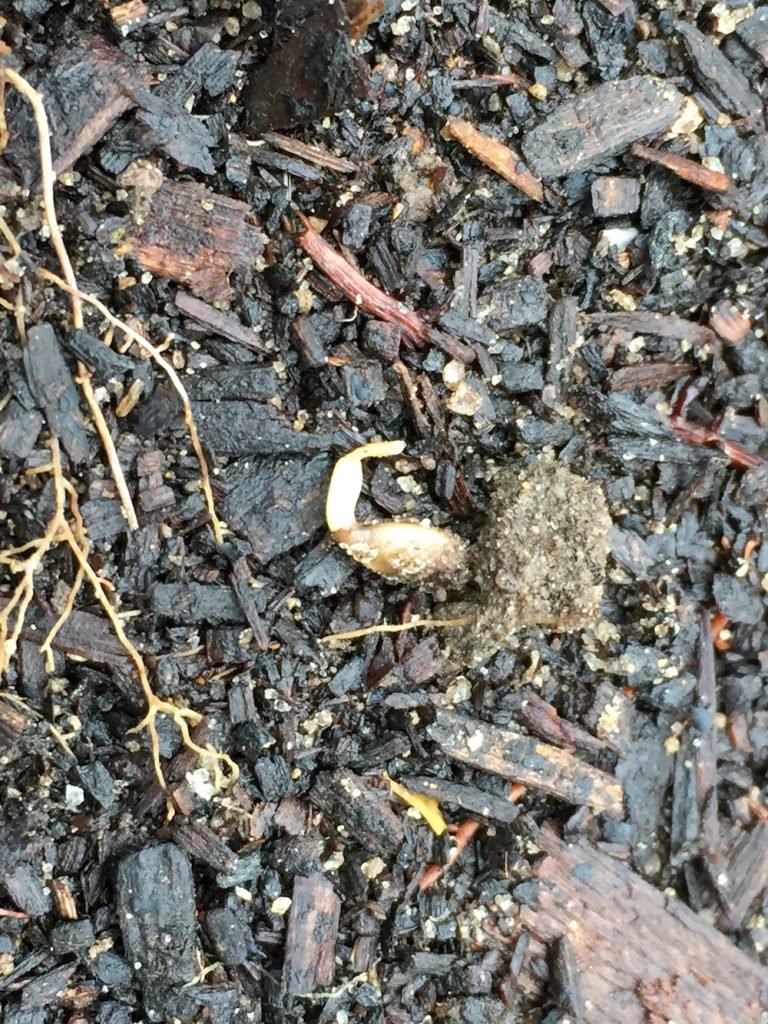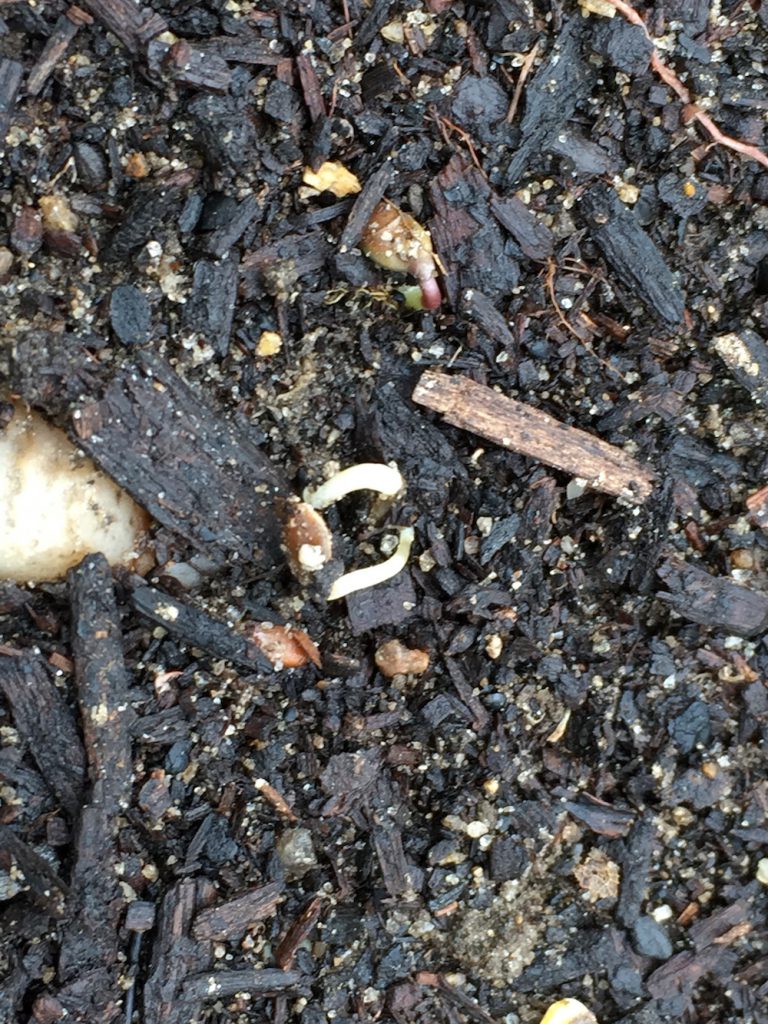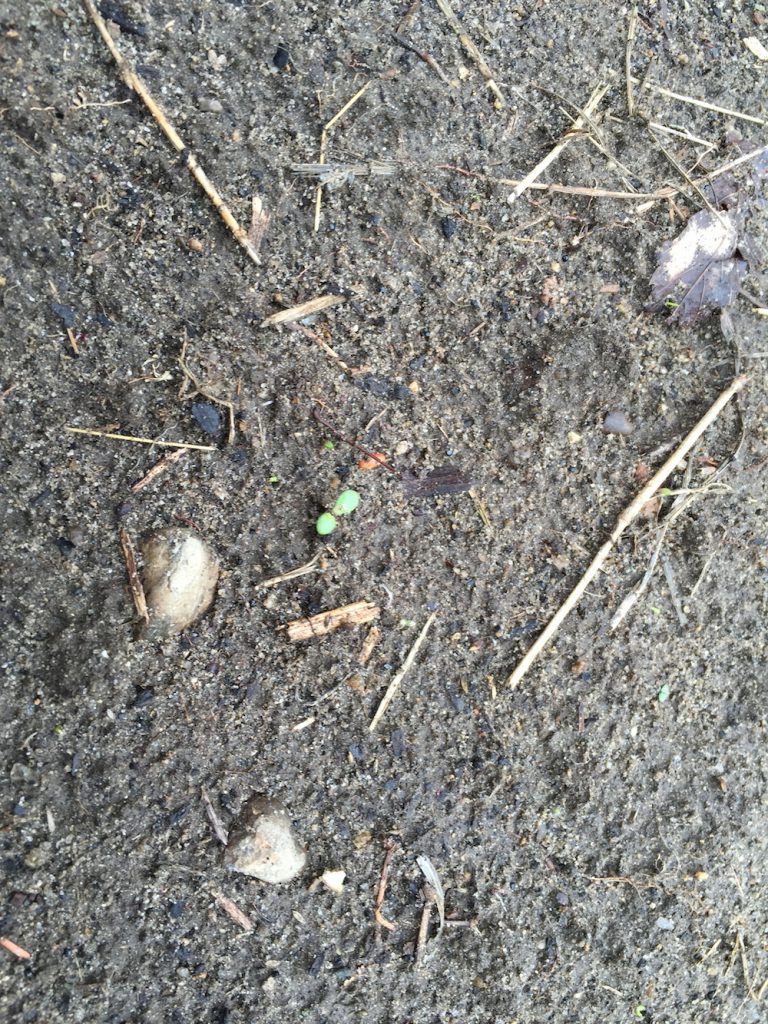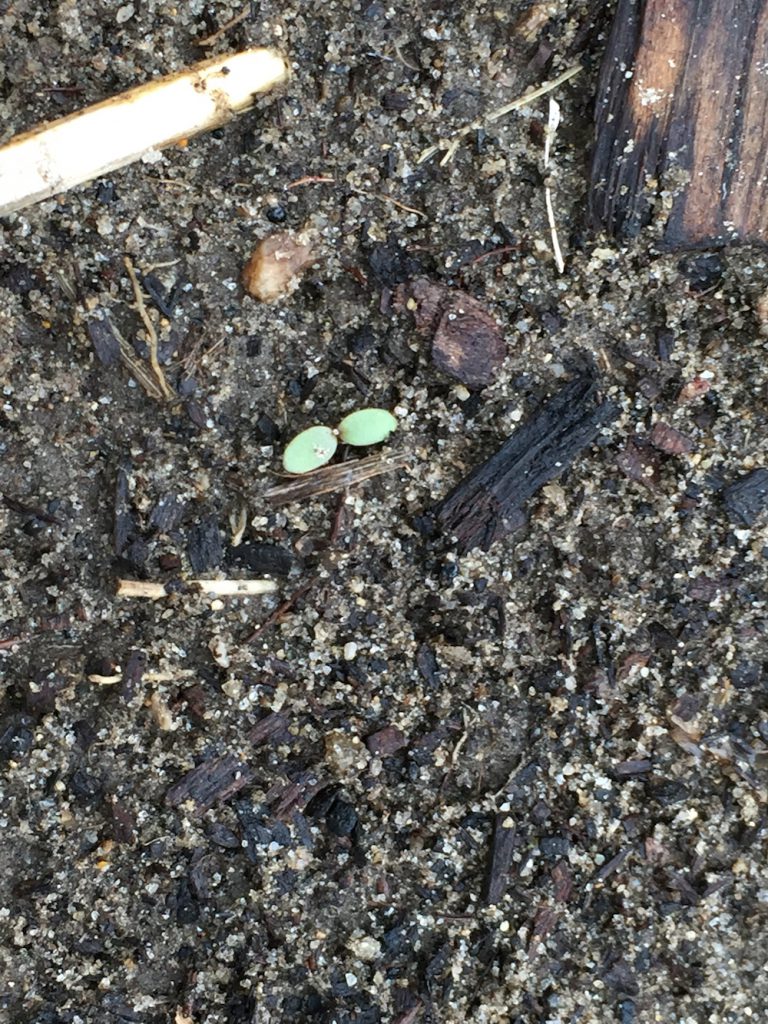In this post I will show some photos of the beds I dug for planting flax this year, and some photos that reflect my desperation as I waited for signs that the seeds were actually germinating!
I decided to focus on 6 types this season. I selected the ones that had the tallest height at harvest last summer. This doesn’t account for branching habit, days to first flower, signs of disease, or any number of other relevant factors in selecting fiber flax seed. On the other hand, it’s straightforward and uses the data at my disposal, so I feel OK about it.
It took me a while to figure out the planting density I wanted and what size to make the beds. I had a little over two ounces of seed for five types: 1602, 5NN, Peynau, Rolin, and Lisa, and about one ounce of the type Ariane. I decided to plant at a rate of 2 ounces per 20 square feet. For the Ariane, the bed is about 10 square feet. This is less dense than the Zinzendorfs recommend (one pound per 100 square feet, which would translate to 2 ounces per 12 square feet) but more dense than some other sources recommend, including an old article I have from Coggeshall Farm (one pound per 225 square feet or 2 ounces per 28 square feet). Now that the seed has actually started coming up, I think I made the beds too big, but I’m getting ahead of myself.
As you may have read in my earlier posts, I spent a few days of April vacation processing flax fiber from my flax-stash, and a few days processing seed to plant. I also spent a few days digging in the garden, which is one of my absolutely favorite things to do. We had a relatively mild winter and early spring here, so there were plenty of other plants up by the time I started digging. Here’s how it looked when I first got going:
My favorite digging tool is actually a hay fork, and it’s suffered from overly heavy use (I broke a tine while digging up madder roots one fall), but I still love it:
Here are some prepped beds:
The soil at our community garden plot is sandy and does not retain nutrients or organic matter. I used a soil test device that indicated nutrients were low but pH was fine. I didn’t spring for proper soil tests at a lab this year. I got all the beds made during April break, and added some composted cow manure and an organic nutrient blend. I ran out of time to plant, however, and had to wait until the following Saturday.
My usual method is to scatter the seed, rake it in, sprinkle more soil on top, stomp it down flat by stepping on a 2×4, and watering. I followed the same steps this year. Here are two beds all planted and watered:
And here are a couple shots of the beds after I marked them with flagging tape to discourage dogs from running through:
Each bed is labeled with the type and planting date, which by the way was Saturday April 30th.
For the next seven days it was very cool and rainy. Cold, even. On the one hand, this is fine. Flax likes cool weather, and it was certainly less work for me, since I didn’t have to water at all. Last spring it was very hot the week after I planted and I had to water daily to keep the seed beds moist. On the other hand, the cold wet weather made me worry that the seeds would just rot. I anxiously checked on Wednesday May 4th and there was nothing. On May 7th there were some signs of life. These poor seeds obviously weren’t buried deeply enough:
Because the seeds are visible, though, I can tell they are flax. Sometimes at the two-leaf stage it is hard to tell if a plant is what you hope it is. These two seedlings look promising:
OK, so something was growing. Fingers crossed and hoping for the best.

